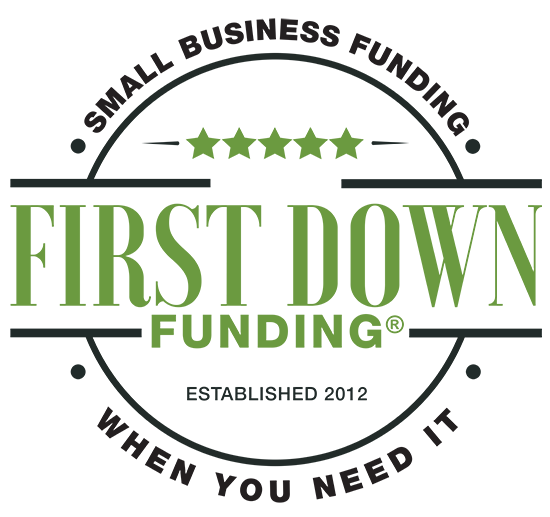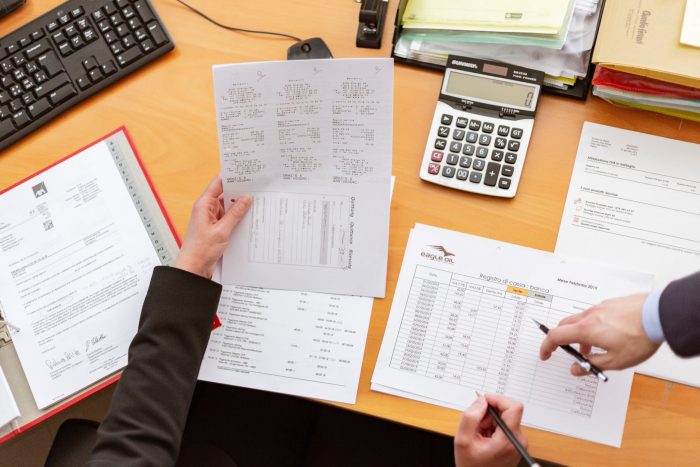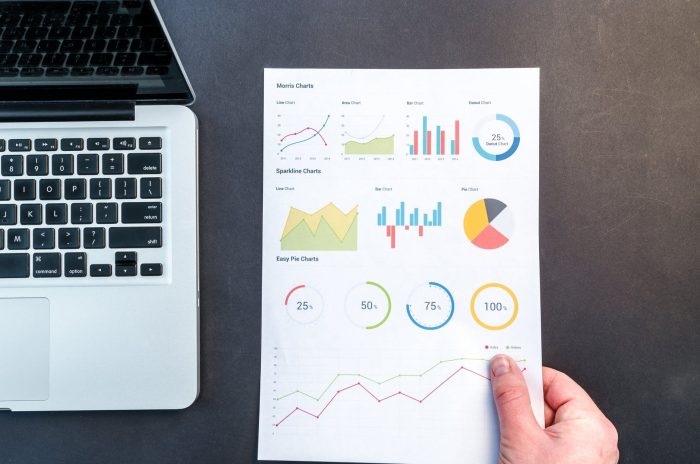BUSINESS FUNDING CALCULATOR
Business Funding Calculator
Small Business Funding
The Best for your Small Business
 Get Pre Approved in Minutes!
Get Pre Approved in Minutes!
[contact-form-7 id=”7754″ title=”Merchant Cash page”]Here’s the Right Loan Calculator For Every Type of Business Loan
Before signing on the dotted line for a small business loan, the number one question you should ask yourself is: Can I afford this loan?
Calculating and understanding your interest rate and loan payment is one of the most complicated and frustrating parts of the business loan search. To make matters even more complicated, there are several types of business loans, and different lenders describe cost in different ways.
A great way to compare loans apples-to-apples is with a business loan calculator. However, one size does not fit all, so steer clear of websites which claim to calculate business loan cost with just one kind of calculator. We’ve built a best-in-class business loan calculator for each of the most popular type business loans to help you determine what you can afford and make it easy to compare loans.
Business Loan Calculator for Every Type of Business Loan
The numbers you need to pay attention to, the way you plug them into a business loan calculator, and the way you uncover your interest rate and loan payment depends on the type of business loan you’re applying for.
These days, there’s no one type of business loan available to entrepreneurs. Traditional bank loans, SBA loans, short-term loans, invoice financing , and many more are all options—and different cost structures are associated with each type of loan.
Here’s a list of the business loan calculators available for you to use:
How Business Loan Calculators Work
Understanding how to calculate APR and loan payments without a small business loan calculator is not for the faint of heart. It’s difficult to do by hand, so business loan repayment calculators are, without a doubt, the much easier way to go.
To give you a little bit of insight into what’s happening behind a business loan calculator, here are the factors that go into the calculation:
- The interest rate you’re quoted on the business loan
- Other fees associated with the loan (origination fees, closing costs, etc.)
- The loan term or expected number of payments
- The loan amount
These will, of course, differ across loan types, and be expected to answer different questions for each product. For example, if you are looking at our merchant cash advance calculator, you will need to know what your projected monthly credit card sales are to be accurate.
Click on the calculators shown in the table above to find specific details for each calculator.

3 Different Ways Small Business Lenders Quote Cost
In the business loan world, there’s no agreed upon or legally required industry standard for quoting the cost of business loans. Depending on which type of business financing you choose, your lender may describe the cost of the financing in different ways. Understanding this “loan lingo” is critical to appreciating how the loan will impact your business’s bottom line.
Here are three common ways to quote the price of a business loan.
Interest Rate
An interest rate is one way to describe the cost of borrowing money. It is a percentage that expresses the amount a lender charges on the loan’s principal for the use of the assets.
You’re probably already familiar with an interest rate if you’ve had other type of debt—credit cards, auto loans, mortgages, student loans, etc.—all of these come with interest rates. Many business lenders, particularly banks, medium-term lenders, and short-term lenders, describe the cost of their loan with an interest rate.
A simple example is a $100,000 business term loan with an interest rate of 8% and a repayment term of 10 years. Interest rates are typically calculated in annual terms, so this means 8% per year. However, it’s not as easy as saying that the yearly cost of this loan is $100,000 x 8 percent = $8,000.
This fails to account for amortization, or the fact that you’re paying off the loan with a series of payments over a fixed period of time. Your first few payments on the loan go primarily towards interest. Later payments go primarily towards principal. And every month or week (however often you make payments), you pay interest on a smaller loan balance. So, on this loan, you ultimately end up paying $45,593 in interest and have a $1,213 monthly payment. Use the term loan calculator
to learn more.
The big problem with interest rate is that it only tells you the cost of borrowing money. It doesn’t include any other fees you might incur as a consequence of borrowing money. To get the full picture, you need to know how fees factor into cost.
Factor Rate
A factor rate is another way to describe loan cost. Lenders quote a factor rate in decimal form, usually ranging from 1.1 to 1.5. When you multiply your factor rate by the amount of money you’re borrowing, you get the total amount of money you need to repay your lender.
Short-term lenders and merchant cash advance providers most commonly quote factor rates. A simple example is a $10,000 merchant cash advance with a factor rate of 1.35. The total amount you’ll be responsible for paying back $10,000 x 1.35 = $13,500.
You’re repaying $3,500 for that $10,000—which might make you think that your interest rate is 35%. However, that’s not the right way to think about factor rates. The interest cost of the capital is indeed 35%. But loans that have a factor rate generally aren’t amortizing loans. This means that with a factor rate, all of the interest is charged to the principal when the loan or advance is originated. Unlike a regular interest rate, your total cost of capital won’t change no matter how quickly you pay back the loan.
When you calculate your business loan’s APR, you’ll find that the actual cost of capital is much higher (often much higher) than what a factor rate leads on. More on this soon.
Similar to interest rate, another problem with factor rates is that they may not account for other fees that the lender assesses.
Discount Rate
One final way to describe business loan cost is in terms of a discount rate or discount fee. Invoice financing providers often quote cost with a weekly or monthly discount rate. Discount rate is similar to an interest rate because it’s a percentage of the total invoice amount (or the amount the provider advances to you) that represents the cost of borrowing money.
For example, suppose you factor a $25,000 outstanding invoice that’s due in four weeks. The invoice financing provider charges a discount fee of 1% per week. That means you’ll have to pay $250 each week until your customer pays the invoice. Assuming your customer pays at the end of the fourth week, you’ll pay $1,000 as the cost for factoring the invoice.
Discount rates have the same problem that we’ve already discussed—they may not account for fees. Plus, you have to make sure you account for how long your customer will take to pay the invoice as the cost is completely dependent on that.
Tying It All Together With Annual Percentage Rate (APR)
APR, also known as the annual percentage rate, represents the total annualized cost of borrowing money. APR represents the interest rate plus any fees associated with a loan. By calculating the APR on loans, you can compare them more easily.
Be careful not to confuse APR with interest rate—even though they are both expressed as a percentage. Yes, loans will have an interest rate, but lenders will often charge fees on top of interest, such as closing costs or an origination fee. Because there’s often both an interest rate and fees, you need to know the APR. The math of calculating APR can be pretty tricky, and there’s where a business loan interest calculator comes in handy.
APR allows you to comparison shop more easily, particularly when you’re trying to compare two loans of the same type (e.g. two short-term loans or two merchant cash advances). For example, let’s say you’re quoted an interest rate of 13% at two different lenders, but in addition to the interest rate, lender A charges an additional 2% in fees and lender B’s fees amount to 3.5%. If you simply looked at the interest rate, you would think their offers were identical.
In reality, lender A is more affordable. In the first example, the first lender would end up costing you 15% APR, while the second would cost you 16.5% APR. That’s a pretty significant difference, and the more money you borrow, the more that 1.5% difference will cost you.
The Limits of APR
The usefulness of APR does have limits though. Short-terms loans have a higher APR because interest and fees are spread out over a shorter period of time. However, this does not mean that a short-term loan is necessarily more expensive than a long term loan. Even though APR is lower on a long-term loan, you usually end up paying more interest on a longer term loan. The longer term allows interest to build up over a longer period of time. For this reason, even though APR is the most accurate representation of what a loan will cost you, it isn’t always the best way to compare two loans, especially if the loans are of different types (e.g. an SBA loan and a short-term loan).
When assessing the cost of a short-term loan, the better approach is to think about how the loan will help your business’s bottom line. If you can use the funds to fuel business growth and generate revenue, then the higher short-term cost may be worth it.
Also very important is the size of the monthly, bimonthly, weekly, or daily payment. If you can’t afford it, or if it’s going to significantly eat into your business’s cash flow, time to reconsider the loan.
Bottom line… APR is a good way to compare loans of the same type, but when you’re talking about two or more different types of loan products, there are additional factors to keep in mind.
What Factors Determine Your Interest Rate/APR?
A lot of subjective factors go into determining the final APR or interest rate of your loan and the type of loan you’ll qualify for.
The Type of Business Loan
Some business loans simply come with higher and lower APRs just because of the type of loan they are. For instance, an SBA loan is one of the most affordable types of loans because the government guarantees a majority of the financing—taking on a lot of the lender’s risk of working with you.
Collateral
If you back your business loan with collateral, then you’ll likely find that they’re less expensive. The collateral will serve as security for the lender—ensuring that they’ll be able to recoup their losses if you can’t pay back.
Speed
A loan might be more expensive because a lender approves applications more quickly—it’s the price you pay for convenience.
The Term of the Loan
As we mentioned above, shorter-term loans have a higher APR, but you’ll pay fewer dollars in interest compared to a long-term loan.
Your Credit Score
When it comes to the price of a business loan, your credit score is a major factor. A strong credit score (650+) shows a lender that, in the past, you’ve use your credit accounts responsibly. The higher your credit score is, the more affordable your loan will be.
The Current State of Your Business
The history of your business and its current financial state will also have an effect on how expensive your loan will be. If you’ve been in business for more than two or three years, lenders are more willing to work with you. In addition, if your business is turning a profit, that also encourages lenders to work with you and charge less.
Business Loan Fees to Watch Out For
As we mentioned above, APR can be a useful tool for measuring the impact of fees on overall loan cost. Sometimes, what seems like a good value can actually end up costing a lot in fees. Here are the six most common fees you can find in the fine print of a business loan agreement.
Keep your eye out for these common fees so you’ll know when you need to use a business loan payment calculator.
Application Fee
When a lender reviews your loan application, they’ll run a credit and background check. They incur a cost when they do this, which sometimes they’ll pass through to the borrower in the form of an application fee.
Origination Fee
An origination fee reflects the costs lenders incur when they make a loan—namely administrative costs. An origination fee is often quoted as a percentage of the loan’s principal, and you pay this fee upfront. For example, if a $10,000 has a 1% origination fee, you’ll pay that $100 upfront as a servicing cost for the loan.
Late Payment Fee
Like many lenders and creditors, small business lenders will sometimes charge fees if you’re late on a payment. If the lender is automatically deducting payments from your business bank account, they will charge a late fee if there are insufficient funds in your account.
Prepayment Fee / Prepayment Penalty
On the other hand, a lender might charge you a prepayment penalty when you pay off your loan early! This fee is usually calculated as a percent of the outstanding balance at the time you pay off the rest of your loan—and is meant to ensure that the lender recoups their costs of servicing the loan.
Guarantee Fee
If you’re applying for an SBA loan, then there’s a chance you’ll have to pay a guarantee fee. Lenders and banks issue SBA loans, and the government guarantees a portion of the loan amount.The lender must pay a portion of the guaranteed amount to the government, so they often pass this fee directly onto the borrower.
Check Processing Fee
Many lenders accept payments via ACH, and many borrowers prefer to pay in this way. However, if you prefer to pay via check, some lenders will charge you a fee to process it. Before you sign on the dotted line, discuss how you’ll be paying them back.
Draw Fee
A lesser-known but still common fee, a draw fee only applies to business lines of credit. When you make your first draw on a line of credit, a lender might charge a draw fee that’s a percentage of the amount you drew—ranging from 1% to 3%. Some lenders also have draw minimums, which means you can’t just leave all the money that the lender makes available to you sitting in your account. You must withdraw some money from your line of credit.
Closing Costs
While not really a “fee,” closing costs represent all the possible fees you might incur when taking out a business loan—processing fee, application fee, origination fee, and so on. It’s especially important to review your loan agreement with an eye out for closing costs. That’s because you want to be fully aware of the separate fees lenders are charging you so you’re able to plug them into a small business loan calculator and find out your true cost of borrowing.
What are the Most Affordable Business Loans?
As you can tell by now, interest rates and APRs run the gamut in the small business lending space. Some will be more expensive, and some less so.
If you have a strong credit score, a few years of business under your belt, and strong business revenues, then you should consider some of the more affordable loans on the market—your business loan interest calculator will spit out a number you’ll be happy with.
Traditional Bank Loans
If you can qualify for a bank loan, then this is the go-to financing route for most small businesses. Bank loans have long terms, ranging from 5 to 25 years, so they are best for those who need financing over a longer period of time versus just short term working capital. A bank loan will almost always be the lowest-cost loan your business will qualify for. If you get an offer from a bank, and plug what you’re quoted into a business loan calculator, you’re likely to get a very low APR—sub 10%.
However, not all small business owners can qualify for bank loans. Those low APRs are reserved for the most qualified borrowers.


SBA Loans
SBA loans are government-guaranteed loans that a lender or bank makes to small businesses.SBA 7(a) loans are the most popular SBA loan program. While these loans are still technically bank loans, they’re slightly easier to qualify for than traditional bank loans. That’s because, with the government’s guarantee, the bank assumes less risk lending to you. If you default on the loan, the guarantee ensures that the bank will get most of its money back.
With the lower risk of lending, the bank can also charge lower interest rates on the SBA loan. Plus, SBA lenders are restricted to the SBA’s interest rate maximums. Under current market rates, SBA 7(a) loan interest rates are capped at around 7% to 9%.
See what SBA financing costs with an SBA loan calculator.
Medium-Term Loans
Remember, only the most qualified borrowers can score a bank loan or an SBA loan. Plus, the application process can take several weeks. If your credit isn’t that strong or if you need a loan fast, online lenders offer medium-term loans with pretty affordable rates.
Medium-term lenders offer large amounts of financing (up to $1 million) over 1 to 5 years. While they’re by no means easy to qualify for, these medium-term loans are slightly easier to snag—at least compared to bank loans. APRs start at 7% and go up to about 30%.
See what a medium-term loan might cost with a term loan calculator.


Business Lines of Credit
Some online lenders also offer business lines of credit that are similar to the lines of credit you might find at a bank. They offer large amounts of financing, flexible terms, and lower interest rates. Much like online medium-term lenders, online line of credit lenders can approve applications much faster than a bank can, and work with borrowers who have slightly lower credit profiles.
You’ll find slightly higher interest rates with these line of credit lenders than traditional banks, but they’re still affordable—think interest rates ranging from 7% to 30%.
See what a business line of credit will cost with a line of credit calculator.
Going Beyond Cost: Determining Your Best Financing Options
Cost is important… but it’s not the only factor to consider. Using a business loan repayment calculator to find out your APR and monthly loan payment is the first step for figuring out whether a loan is a good fit for you and your business. However, just because a business loan is cheap and affordable doesn’t mean you should necessarily take it.
There are other factors to consider. Especially if two lenders are offering you similarly priced loans, you may want to make your choice by looking at a few other factors.
If you have done your research on both lenders, and see one has much better reviews, that may be the lender you want to work with. And, if one lender has been much more pleasant to work with up to this point, chances are that will be the case down the road too. It may be worth it to pay a tad more to work with a company you like better.
If one lender is asking you to put up collateral, and the other isn’t, you may be better off going with the lender that doesn’t require collateral. In the worst case scenario that you default on the loan, your assets will be safe.
If one lender has a prepayment penalty but the other does not, it might be better to go with the lender that doesn’t charge a penalty. If you have plans to pay off the loan early or come into extra cash, you want to avoid a prepayment fee.
APRs can differ widely if the length of time that your loan would be active are not the same. In general, a short-term loan will have a higher APR than a long-term loan with similar fees and interest rates, but taking that loan for a longer period of time can cost more in dollars overall. In some cases, it makes sense to take money out for a shorter period of time and pay fewer total dollars of interest.
The Bottom Line on Business Loan Calculators
Determining loan cost is not easy. The lender may tell you just one number, but there are a lot of factors that go into that. This is where small business loan calculators can help. The type of loan, fees, and the time you have to repay the loan are just some of the factors that will have an impact on your total loan cost. There are also more subjective factors, such as the current state of your business. Before you sign on the dotted line of any loan agreement, make sure you understand all the factors that are involved and know exactly how much your small business loan is and how you’ll be paying.